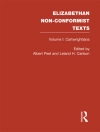In ‘The Decadent: Being the Gospel of Inaction, ‘ Ralph Adams Cram presents a thought-provoking exploration of aestheticism and the philosophy of inaction, intricately woven into a narrative that critiques the bustling activity of contemporary life. Cram’s literary style combines eloquent prose with vivid imagery, drawing from both Romantic and Gothic traditions to create a rich tapestry of contemplative thought. The work speaks to the turn of the 20th century, a time marked by rapid industrialization and cultural transformation, challenging the reader to reflect on the value of stillness and the art of living mindfully amidst chaos. Ralph Adams Cram, a prominent architect and writer, was deeply influenced by the artistic movements of his time and the encroachment of modernity on traditional values. His career straddled the realms of architecture and literature, with a philosophy deeply rooted in the belief that beauty and art were essential to the human experience. Cram’s engagement with the aesthetic movement and his personal struggles with the implications of modernity provided the impetus for this contemplative work, illustrating his yearning for a return to a more meaningful existence. This book is highly recommended for readers interested in philosophical literature, aesthetics, and the critique of modernity. Cram’s eloquent discourse invites readers to reconsider their relationship with the frenetic pace of life, offering a refreshing perspective that emphasizes the importance of introspection and navigating existence with purpose. ‘The Decadent’ is not only a literary endeavor but also a profound meditation that resonates with a contemporary audience seeking solace in the quietude of thought.
เกี่ยวกับผู้แต่ง
Ralph Adams Cram (1863-1942) was an influential American architect, writer, and educator, known primarily for his role in the Gothic Revival movement in architecture. However, his contributions to literature are often overshadowed by his architectural achievements. Among his written works is ‘The Decadent: Being the Gospel of Inaction, ‘ which examines the cultural and spiritual malaise of society, as reflected through the lens of his philosophical and aesthetic principles. Though less known, his literary style often mirrored the architectural penchant for structure, imbuing his prose with a sense of historical weight and intellectual rigor. Cram’s writing expressed a deep concern for the decline of spiritual and artistic standards in the face of modernity and industrialization, themes central to his ideology and architectural practice. As an author, Cram’s work extends beyond the realm of literature into social commentary, underscoring his belief in the importance of integrating beauty and ethics in all forms of creative expression. His advocacy for a revival of craftsmanship and meaningful art made him a distinctive voice both in the fields of architecture and literature of his time.












